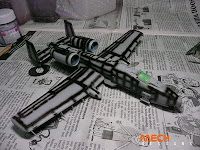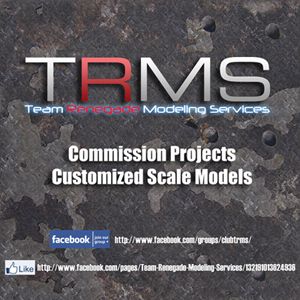Academy 1/72 A-10A Thunderbolt: Tail-grabber No More
Just a short update; finally resolved the tail-grabbing issue. Many thanks to the guys at IPMS Philippines and Plamo for the inputs. By the way I used lead weights. real heavy and works perfectly. :D I also sealed the fuselage, expecting heavy putty work and sanding.
Academy 1/72 A-10A Thunderbolt: Balancing Issue
As expected, this guy was tail-heavy! I have to put so much metal stuffs I found that I cant fit it inside the cockpit and nose area of the kit anymore. Im thinking of using the Tamiya Multi Chasis Balance Weight as an alternative coz its smaller and easier to hide. But Im still asking the pros at Plamo and Mechapinoy, maybe they have a better suggestion.
Academy 1/72 A-10A Thunderbolt
This will be my first time building and painting a plane scale model, and its a part of the Mechapinoy 1/72 Aircraft group build. I choose the A-10A simply because its one of my fave birds of all time. I must admit that building this will not be a breeze since its my first time and I have to rely on different aircraft builds for reference. So wish me luck. :)
For the color scheme I intend to use this one:
Here's a bit of history about the model (c/o Wikipedia)
The A-10 Thunderbolt II is an American single-seat, twin-engine, straight-wing jet aircraft developed by Fairchild-Republic in the early 1970s. The A-10 was designed for a United States Air Force requirement to provide close air support (CAS) for ground forces by attacking tanks, armored vehicles, and other ground targets with a limited air interdiction capability. It is the first U.S. Air Force aircraft designed exclusively for close air support.
The A-10 was designed around the GAU-8 Avenger, a heavy automatic cannon which forms the aircraft's primary armament. The aircraft's hull incorporates over 1,200 pounds (540 kg) of armor and was designed with survivability as a priority, with protective measures in place which enable the aircraft to continue flying even after taking significant damage.
The A-10's official name comes from the Republic P-47 Thunderbolt of World War II, a fighter that was particularly effective at close air support. The A-10 is more commonly known by its nickname "Warthog" or simply "Hog". As a secondary mission, it provides airborne forward air control, guiding other aircraft against ground targets. A-10s used primarily in this role are designated OA-10.
Now onto the build...
As most aircrafts modelers do, I painted the cockpit and insides of the fuselage, actually hand-brushed using Gunze lacquer paints. I also used oil paints to give it a general wash. Was kindda disappointed because the instrument panels were only water slide decals.
I also dry fitted the kit to study it further; I really dont want to mess up sealing and painting this kit. I also realized that it was not a good idea to get an Academy kit, especially for a first timer like me... yes, it was a really cheap kit but it also has a lot of flaws like huge gaps, fitting issues, etc. Looks like this one will need a ton of putty work and sanding. I should have gotten the Hasegawa or Revell instead, oh well. (LOL)
Subscribe to:
Posts (Atom)





















0 comments:
Post a Comment